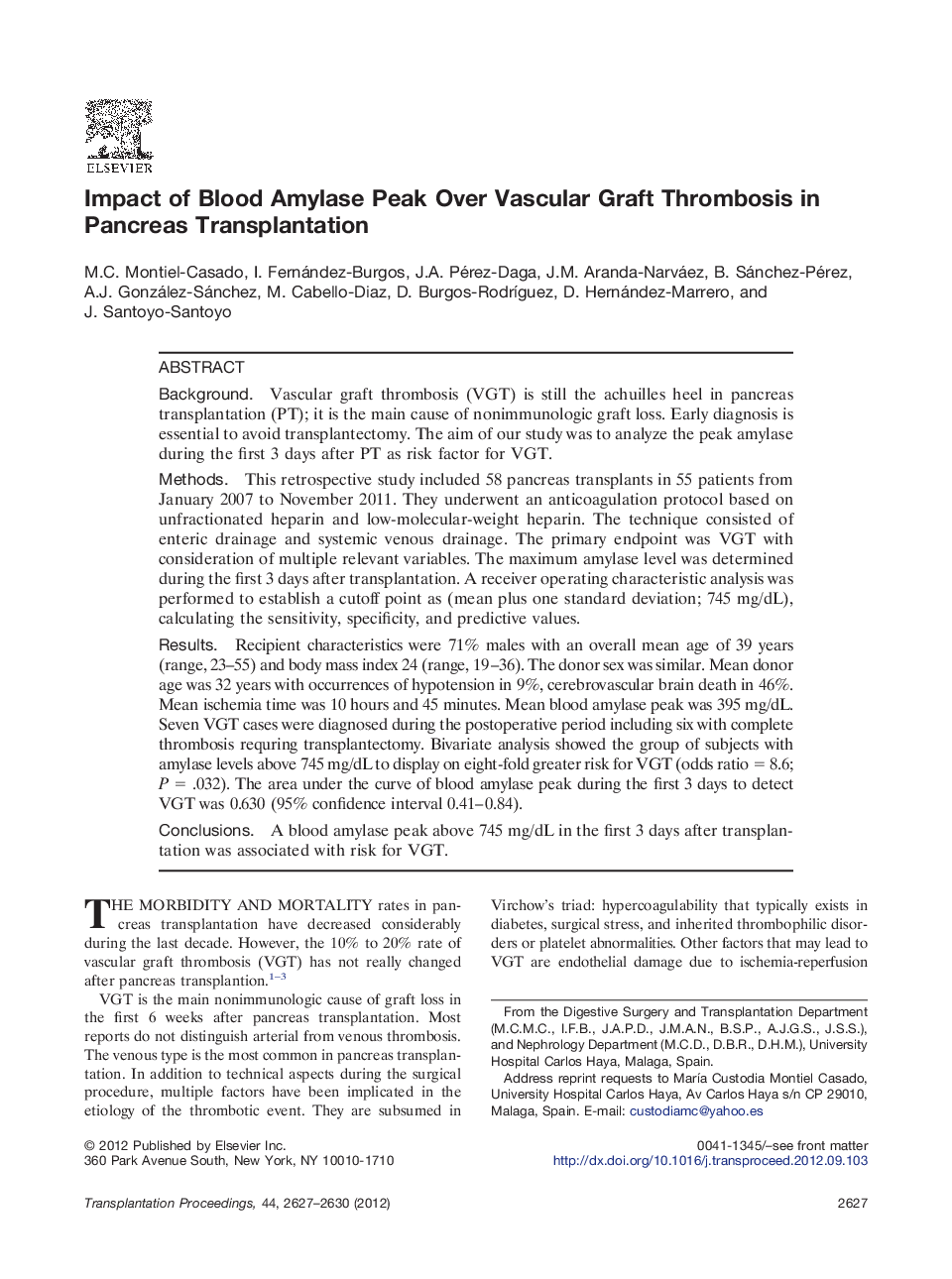| Article ID | Journal | Published Year | Pages | File Type |
|---|---|---|---|---|
| 4256279 | Transplantation Proceedings | 2012 | 4 Pages |
BackgroundVascular graft thrombosis (VGT) is still the achuilles heel in pancreas transplantation (PT); it is the main cause of nonimmunologic graft loss. Early diagnosis is essential to avoid transplantectomy. The aim of our study was to analyze the peak amylase during the first 3 days after PT as risk factor for VGT.MethodsThis retrospective study included 58 pancreas transplants in 55 patients from January 2007 to November 2011. They underwent an anticoagulation protocol based on unfractionated heparin and low-molecular-weight heparin. The technique consisted of enteric drainage and systemic venous drainage. The primary endpoint was VGT with consideration of multiple relevant variables. The maximum amylase level was determined during the first 3 days after transplantation. A receiver operating characteristic analysis was performed to establish a cutoff point as (mean plus one standard deviation; 745 mg/dL), calculating the sensitivity, specificity, and predictive values.ResultsRecipient characteristics were 71% males with an overall mean age of 39 years (range, 23–55) and body mass index 24 (range, 19–36). The donor sex was similar. Mean donor age was 32 years with occurrences of hypotension in 9%, cerebrovascular brain death in 46%. Mean ischemia time was 10 hours and 45 minutes. Mean blood amylase peak was 395 mg/dL. Seven VGT cases were diagnosed during the postoperative period including six with complete thrombosis requring transplantectomy. Bivariate analysis showed the group of subjects with amylase levels above 745 mg/dL to display on eight-fold greater risk for VGT (odds ratio = 8.6; P = .032). The area under the curve of blood amylase peak during the first 3 days to detect VGT was 0.630 (95% confidence interval 0.41–0.84).ConclusionsA blood amylase peak above 745 mg/dL in the first 3 days after transplantation was associated with risk for VGT.
